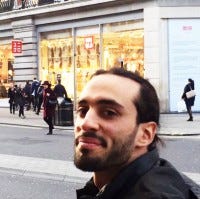Zelda: BotW, How to explore an open world
Guiding the player while staying true the ideals of the open world in Zelda: Breath of the Wild

Breath of the Wild has a very solid approach to the concept of open-world. The whole world is open to the player right after the tutorial area which last roughly an hour. After the tutorial the player receives the final quest; destroy Gannon. From there, the player has two goals; explore the world and beat the game. Only the option to beat the game is presented to the player with a quest log that tells the player to kill the boss, and a marker showing the location of the boss dungeon. The beauty is that there are no explicit guidance for the player to explore the world. Exploration, which is the core of the game, presents itself as an emergent goal!
The story is setup so that the player can go to the final dungeon -a huge landmark that can be seen from almost any where in the world- and finish the game.This option requires skill, but it is not impossible. The player can find many kinds high level weapons in the boss-dungeon but the combat system is designed so that, player skill is more valuable than item level. There are no limitations to equipping high-level weapons. Spending 50 hours to explore the whole world is not rewarded by an abstract concept of character level or ability to equip weapons. It is a much more realistic, much more valuable reward, it is player skill. Learning enemy strengths and weaknesses and honing reflexes to counter them is the reward
Thinking about how the goals are presented right after the tutorial from an emotional level; this is option is the designers telling the new players: ‘You don’t care about all the work we put in to the game? Fine, go finish the game and feel like a champ” A design is usually powerful when it can deliver the message to the users. It is even more powerful when the user has the option to ignore the message and continue enjoying the design.
People may argue that the game doesn't explain well enough that; through exploration, the player could grow stronger and beat the final boss more easily. I would argue that if the game explained this explicitly, time spent in the game would be grinding to have an easier boss fight rather than exploring. Exploring as an action rises from our want to learn. Turning this natural urge to a chore would be betraying the notion of exploration and in turn betraying the game’s design.
Exploring, which is the main dynamic of the game, is presented to the player as an emergent goal. Player seeing the beautiful landscapes around the game is tempted to see what is under each nook and crook. The exploring player is encouraged to explore even further by being rewarded even the smallest effort to explore. When the player sets a self imposed goal to climb the highest peak there is a reward waiting, and it is not just a boring old chest, the rewards are usually stories. Sometimes told by a NPC waiting there, and sometimes told by the environment. Even the more boring rewards like weapons and consumable items are placed in a way to tell a story.
Rewarding the player with a story requires the whole world to be built from the ground up thinking about each path the player might take, and sculpting the experience in every single corner of the world. There are no cognitive dissonances to break immersion for the sake of making the player take the intended path, instead every path is crafted as if it were the intended path. As a result of this heavy workload, a true, non generated open world like this becomes an environment that players can express their creativity.
Considering all the hand-holding contemporary games (open world or not) do to appeal to a broader audience, Zelda's approach is a radical one. I think this approach was a result of the design team adhering to their pillars uncompromisingly. As a result, by making a radical choice of not holding the player’s hand through this overwhelmingly huge open world. The game managed to appeal to a much larger audience
Read more about:
BlogsAbout the Author(s)
You May Also Like







.jpeg?width=700&auto=webp&quality=80&disable=upscale)








